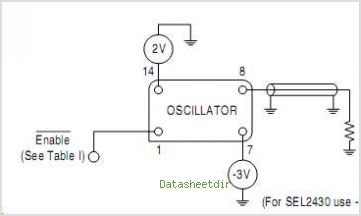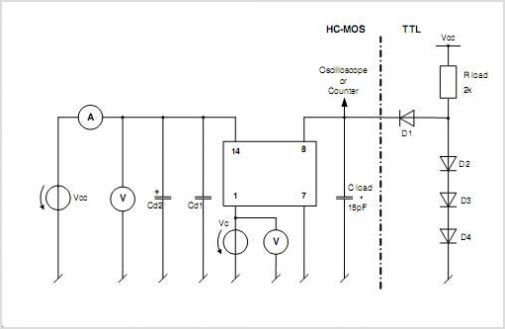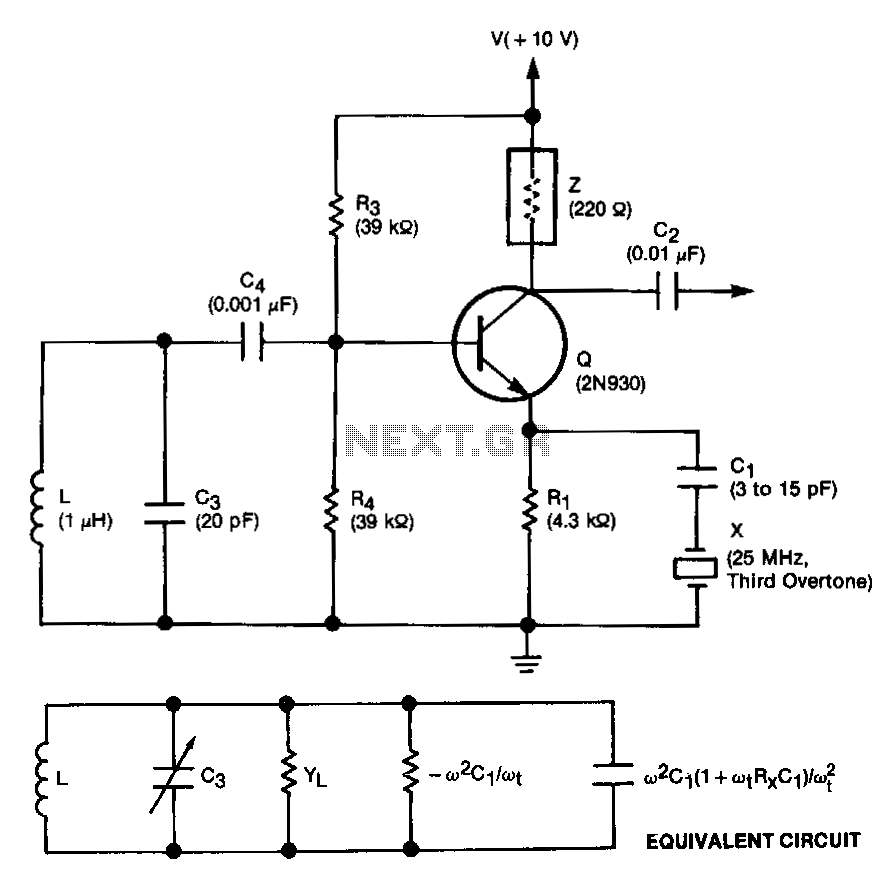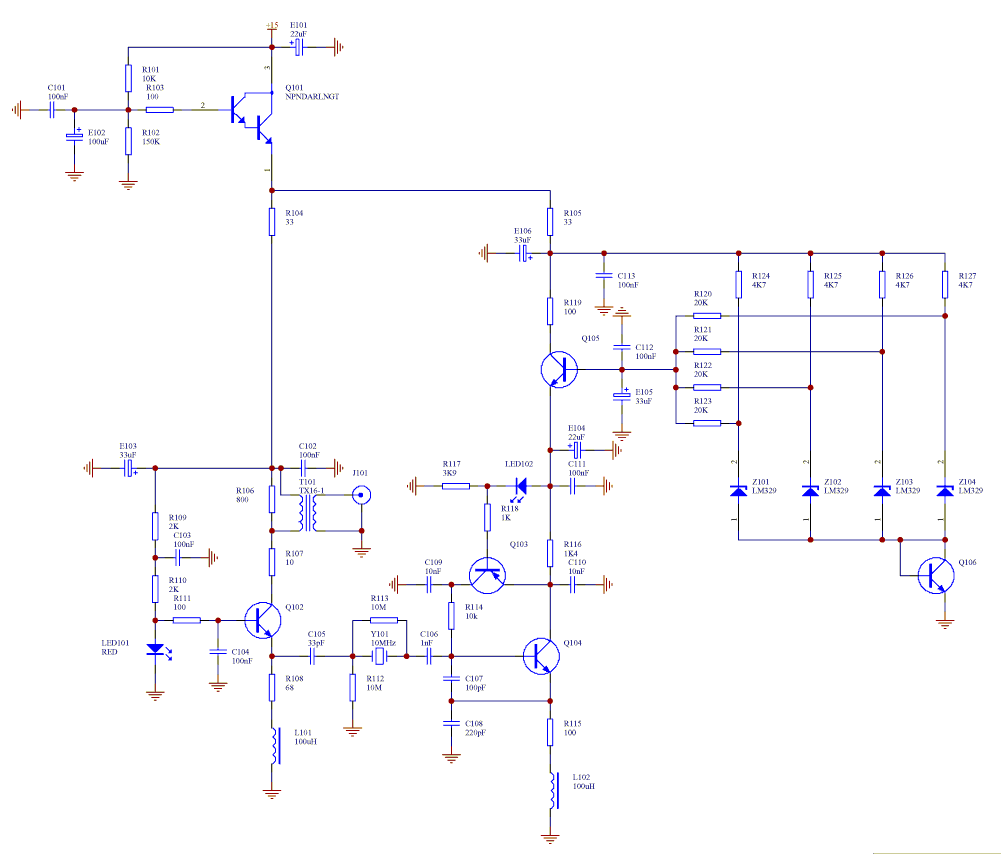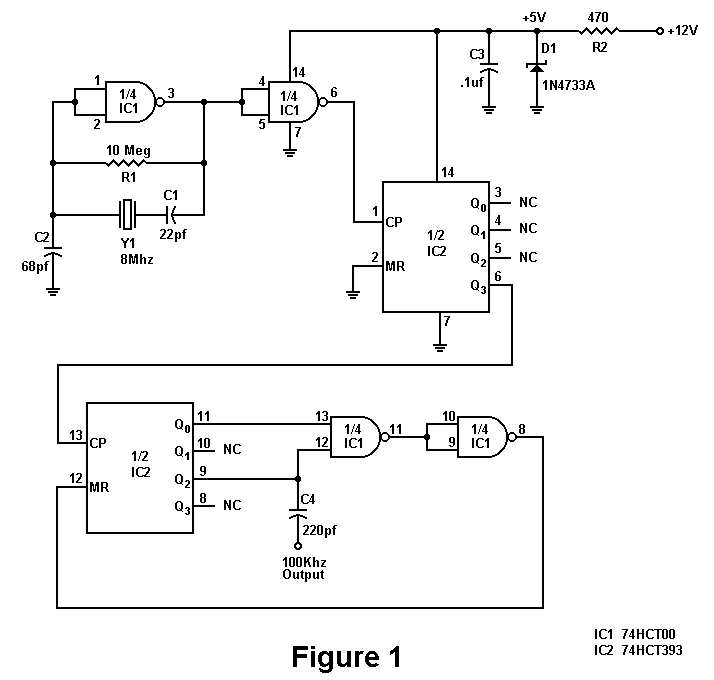
330Mhz Crystal Oscillator
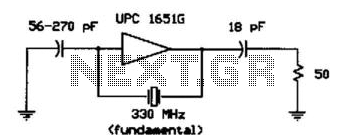
A /xPC 1651G IC operates in the fundamental mode with an experimental crystal at 330 MHz. The 56-to-270 pF capacitor is not critical; about +1 dBm RF output is available.
The /xPC 1651G integrated circuit (IC) is designed to function in the fundamental mode, utilizing a crystal oscillator operating at a frequency of 330 MHz. This frequency is critical for applications requiring precise timing and synchronization. The IC's operation in fundamental mode suggests that it directly uses the fundamental frequency of the crystal for its oscillation, which is often preferred for its simplicity and stability.
The capacitor range specified, from 56 to 270 pF, indicates a tuning capability that allows for adjustments in the circuit's resonant frequency. While the description states that this capacitor is not critical, it implies that variations within this range will not significantly affect the performance of the circuit. This flexibility can be advantageous in experimental setups where component values may be adjusted based on availability or specific application needs.
The output power of approximately +1 dBm signifies that the IC is capable of delivering a modest RF signal suitable for various applications, including signal processing and transmission in communication systems. The RF output level indicates that the IC can interface effectively with other RF components, such as amplifiers and mixers, within a broader electronic system.
In summary, the /xPC 1651G IC's operational characteristics, including its frequency, capacitor range, and output power, make it a versatile component for RF applications, providing essential functionality in experimental and practical electronic designs. A /xPC 1651G IC operates in the fundamental mode with an experimental crystal at 330 MHz. The 56-to-270 pF capac itor is not critical; about + 1-dBm RF output is available.
The /xPC 1651G integrated circuit (IC) is designed to function in the fundamental mode, utilizing a crystal oscillator operating at a frequency of 330 MHz. This frequency is critical for applications requiring precise timing and synchronization. The IC's operation in fundamental mode suggests that it directly uses the fundamental frequency of the crystal for its oscillation, which is often preferred for its simplicity and stability.
The capacitor range specified, from 56 to 270 pF, indicates a tuning capability that allows for adjustments in the circuit's resonant frequency. While the description states that this capacitor is not critical, it implies that variations within this range will not significantly affect the performance of the circuit. This flexibility can be advantageous in experimental setups where component values may be adjusted based on availability or specific application needs.
The output power of approximately +1 dBm signifies that the IC is capable of delivering a modest RF signal suitable for various applications, including signal processing and transmission in communication systems. The RF output level indicates that the IC can interface effectively with other RF components, such as amplifiers and mixers, within a broader electronic system.
In summary, the /xPC 1651G IC's operational characteristics, including its frequency, capacitor range, and output power, make it a versatile component for RF applications, providing essential functionality in experimental and practical electronic designs. A /xPC 1651G IC operates in the fundamental mode with an experimental crystal at 330 MHz. The 56-to-270 pF capac itor is not critical; about + 1-dBm RF output is available.
